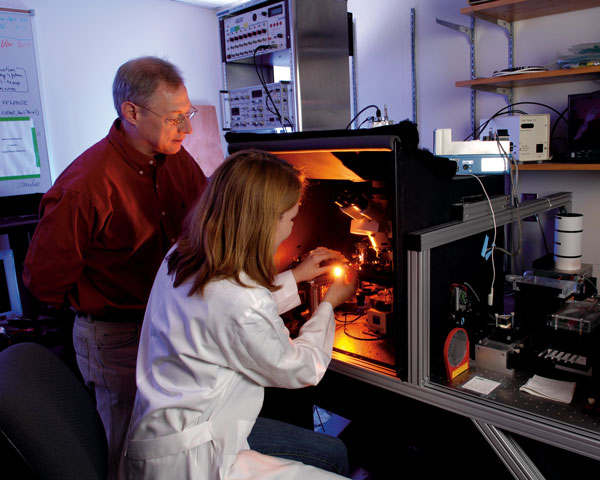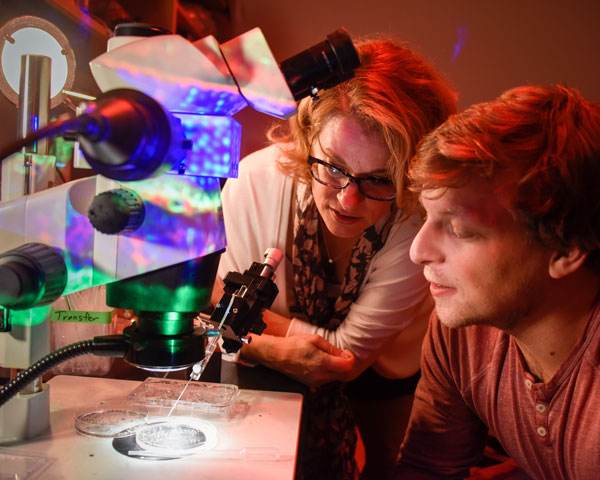Ocular Biology
Within ocular biology, researchers at the UAB School of Optometry are studying cellular and mechanical mechanisms, retinal anatomy and physiology, ocular biome, ocular surface, infection, inflammation, neurobiology and ocular pharmacology.
Featured Research

How Biology of the Eye Reflects the Health of the Brain
Timothy Kraft, PhD, is an expert in retinal physiology who has studied the function and biophysics of retinal photoreceptors for almost 30 years. Kraft has worked with fellow UAB researcher Dr. Erik Roberson, and together they have proven a functional loss in the retinas of an animal model of frontotemporal dementia, which parallels similar problems in human patients.
This vision loss is attributable to a loss of ganglion cells in the retina whose functional deficits Kraft was able to measure in an animal model of dementia. What are the next exciting step? Several possibilities include further refining the vision testing and applying those tests to human patients. Another opportunity is testing retinal function in other models of Alzheimer’s and dementia to further investigate the visual ramifications of brain diseases.

Molecular Mechanisms of Retinal Degenerations and Ciliopathies
Alecia K. Gross, PhD, is researching protein-mediated retinal degenerations and molecular mechanisms of photoreceptor membrane biogenesis—in particular, the necessary molecular interactions for healthy photoreceptor disk membranes to form.
In her lab, Dr. Gross and her graduate students investigate the cellular and molecular biological mechanisms of severe photoreceptor degenerative disorders such as retinitis pigmentosa and the ciliopathy diseases Meckel Gruber Syndrome and Bardet-Biedl Syndrome.
They have discovered and uncovered key ciliary proteins and mechanisms that are involved in protein trafficking and disk formation in the sensory cilium of photoreceptors. They use transgenic tadpoles, conditional and congenital knock-in and knock-out mice and polarized tissue culture cells as our model systems to carry out their studies.